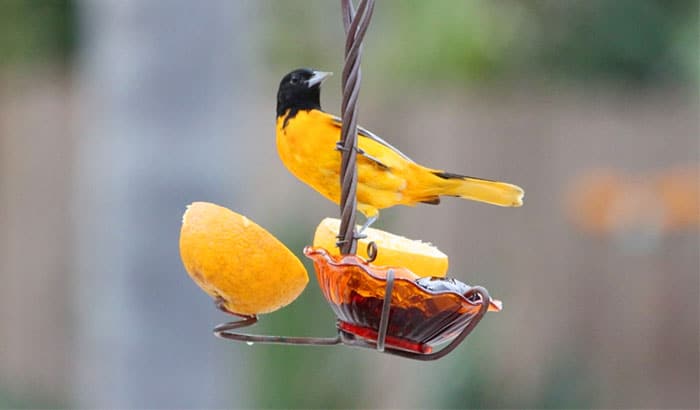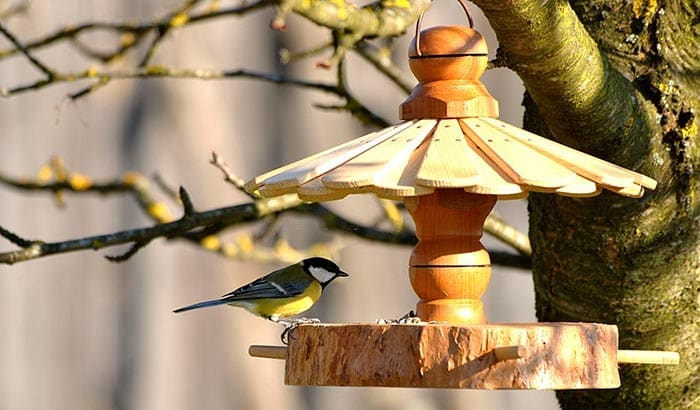I’m extremely fascinated by bird watchers. They are willing to spend a lot of time and effort to provide for their beloved avians. One of the most unique ideas birthed by bird watchers is the jelly bird feeder. It’s fresh, simple, and effective. After extensive research and experimentation, I developed my own recipe and process. Here’s how to make a jelly bird feeder in just 6 easy steps!
Contents
What is a Jelly Bird Feeder?
A jelly bird feeder is exactly what the name implies. It is a bird feeder that doesn’t feature seeds. It uses jelly to attract and feed birds, especially fruit-loving birds.
Although birds don’t have a refined sense of taste, they can taste sweetness. They mostly use their sense of taste not for pleasure, but to determine which foods are conducive to their good health. Fruit-eating birds are the most loving of sweets. These birds include orioles, gray catbirds, scarlet tanagers, mockingbirds and grosbeaks. A few finches and woodpeckers might also drop by.
Additionally, jelly bird feeders are preferred by migrating birds. In my experience, migrating birds prefer sweet jelly over seeds. This is probably because they need the energy that sweets provide for their long journey.
Using varying bird foods is a good way to attract different kinds of birds. The same principle applies to jelly flavors. But in my experience, of all the jellies, jams, and marmalades I put out for birds, they seem to prefer dark grape jelly.
How to Make a Jelly Bird Feeder
Ingredients
- Jelly packet
- Bits of fruits
- Birdseed
- Water
Tools Needed
- Cookie cutters
- Strings
1. Prep the Jelly
Prepare the jelly according to the manufacturer’s instructions. Remember, the more natural the jelly is, the better. I make sure that the jelly is as organic as possible so I can provide the best nutrition for the birds.
However, when preparing the jelly, use less water than the manufacturer suggests. I like having the jelly thicker than what the manufacturer intended. This way, the jelly can hold itself together better. This viscosity will come in handy later.
The way I do it is to use a cup of water for each packet of jelly.
2. Add the Bits of Fruits for More Nutrition
Before the jelly sets, I add bits of fruit into the mix. I make sure that the fruits are chopped into pieces small enough to fit into my cookie cutters. I add fruits because I want to provide as much nutrition as possible.
Of all the fruits I added into my jelly bird feeder recipes, grapes seem to be the bird favorite. I get a lot more visitors whenever there’s a grape hidden inside the jelly. Also, birds seem to prefer grape-flavored jelly.
3. Let the Jelly Set for a Couple of Minutes then Add Bird Seed
Once the jelly powder melts in the water, I let the mixture sit for a few minutes. Then, I add birdseed. This is why I want the jelly to be thicker than how the manufacturer intended it. If it’s too runny or wet, the mixture will be too soft and will easily fall apart. A thicker mixture can better hold the entire recipe together.
While I’m adding in the birdseed, I mix the jelly. I make sure I don’t put too much birdseed. I want the jelly to coat the seeds.
4. Scoop Jelly into Cookie Cutters with Strings
This is not entirely necessary, but just to make the experience more fun, I put the jelly recipe into cookie cutters of variant shapes. I just enjoy watching birds eat from differently-shaped jelly bird feed.
I first fill only half of the cookie cutters with the jelly mixture. I add a bit of string then fill the cookie cutter with jelly. This way, the string is right in the center of the jelly mixture. But before I put the string in the jelly, I tie the end inside the jelly into a knot so it won’t slip out. The string will serve as my hanging mechanism.
I press the jelly mixture firmly into the cookie cutters so that they’re compact and not loose.
5. Set Aside Mixture to Dry
I set the mixture aside overnight to let it dry. I make sure to leave in a cool dry place. Leaving it in the sun may just melt it again.
6. Hang for the Birds to Enjoy!
The last step is to hang the jelly bird feeders for the birds to enjoy. I carefully pull the strings and remove the jellies from the cookie cutters. I hang the jelly bird feeders on branches outdoors.
Conclusion
Jelly bird feeders are not very common, but they attract a lot of different birds than common birdseed feeders. Hanging different kinds of bird feeders lets me enjoy watching different varieties of birds. It also allows me to provide nutrition and sustenance to as many birds as possible.
Based on my experience, this is how to make a jelly bird feeder effectively and easily. With my easy 6-step jelly bird feeder recipe, I get to enjoy watching birds while knowing that I’m providing the best nutrition that I can.


